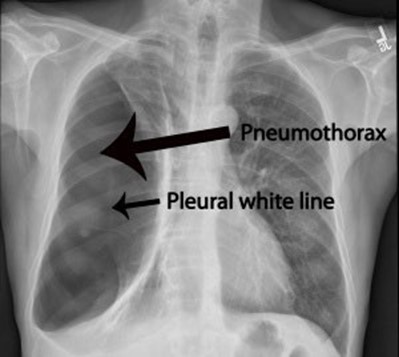A nurse is caring for a client 4 hr following evacuation of a subdural hematoma. Which of the following assessments is the nurse's priority?
Respiratory status
Temperature
Intracranial pressure
Serum electrolytes
The Correct Answer is A
The correct answer is a. Respiratory status.
Choice A: Respiratory Status
Reason: After the evacuation of a subdural hematoma, monitoring the respiratory status is crucial. This is because changes in respiratory patterns can indicate increased intracranial pressure (ICP) or brainstem compression, which are life-threatening conditions. Ensuring that the airway is clear and that the patient is breathing adequately is the top priority. Normal respiratory rate for adults is 12-20 breaths per minute.
Choice B: Temperature
Reason: While monitoring temperature is important to detect infections or other complications, it is not the immediate priority in the acute postoperative period following a subdural hematoma evacuation. Fever can indicate infection, but it is less likely to cause immediate life-threatening complications compared to respiratory issues.
Choice C: Intracranial Pressure
Reason: Monitoring intracranial pressure (ICP) is very important in patients with brain injuries. Normal ICP ranges from 5-15 mmHg. However, changes in respiratory status can be an early indicator of increased ICP. Therefore, while ICP monitoring is critical, ensuring the patient’s respiratory status is stable takes precedence.
Choice D: Serum Electrolytes
Reason: Serum electrolytes are important to monitor for overall metabolic stability and to detect imbalances that could affect neurological function. Normal ranges for key electrolytes are: Sodium (135-145 mEq/L), Potassium (3.5-4.5 mEq/L), and Chloride (80-100 mEq/L). However, these are not the immediate priority in the acute phase following surgery compared to respiratory status.
Nursing Test Bank
Naxlex Comprehensive Predictor Exams
Related Questions
Correct Answer is D
Explanation
Choice A Reason: This is incorrect because dextrose 5% in 0.9% sodium chloride is a hypertonic solution that can cause fluid overload and pulmonary edema in a client who has burns.
Choice B Reason: This is incorrect because dextrose 5% in water is a hypotonic solution that can cause fluid shifts from the intravascular space to the interstitial space, resulting in hypovolemia and hypotension in a client who has burns.
Choice C Reason: This is incorrect because 0.9% sodium chloride is an isotonic solution that can cause hypernatremia and hyperchloremia in a client who has burns, as the fluid loss from burns is greater than the sodium loss.
Choice D Reason: This is correct because lactated Ringer's is an isotonic solution that contains electrolytes similar to plasma, such as sodium, potassium, calcium, and chloride. It also contains lactate, which is converted to bicarbonate in the liver and helps correct the metabolic acidosis that occurs in a client who has burns.
Correct Answer is C
Explanation
Choice A Reason: This is incorrect because clamping the client's chest tube can cause a tension pneumothorax, which is a life-threatening condition that requires immediate intervention.
Choice B Reason: This is incorrect because increasing the client's wall suction can cause excessive negative pressure in the pleural space, which can damage the lung tissue and impair ventilation.
Choice C Reason: This is correct because repositioning the client can help relieve chest burning, which may be caused by irritation of the intercostal nerves by the chest tube or by air trapping in the pleural space.
Choice D Reason: This is incorrect because stripping the client's chest tube can create high negative pressure in the pleural space, which can damage the lung tissue and impair ventilation.

Whether you are a student looking to ace your exams or a practicing nurse seeking to enhance your expertise , our nursing education contents will empower you with the confidence and competence to make a difference in the lives of patients and become a respected leader in the healthcare field.
Visit Naxlex, invest in your future and unlock endless possibilities with our unparalleled nursing education contents today
Report Wrong Answer on the Current Question
Do you disagree with the answer? If yes, what is your expected answer? Explain.
Kindly be descriptive with the issue you are facing.
